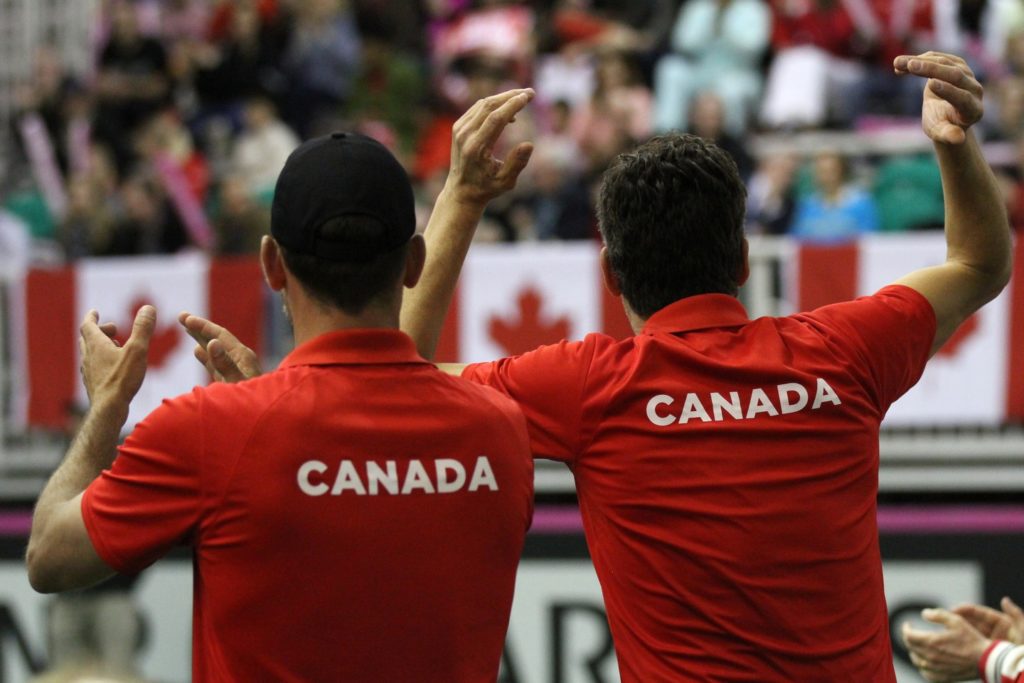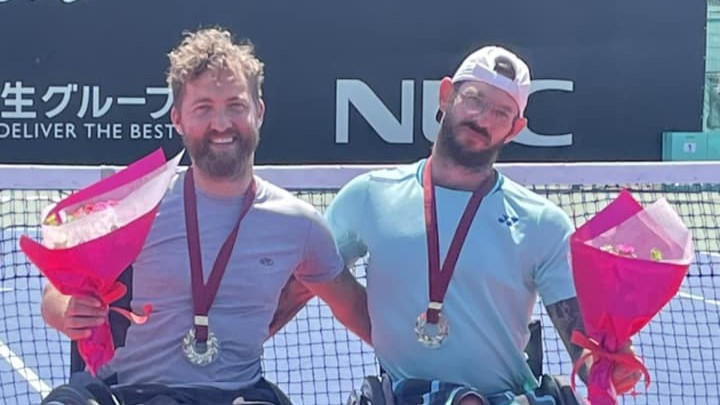
“Poised” is something of an old-fashioned term often used to describe the balance after the opening day of a Fed Cup or Davis Cup competition.
It certainly applies after day one of this weekend’s Fed Cup World Group II play-off with Canada hosting Kazakhstan at STADE IGA in Montreal.
The first match on Saturday lasted two hours and 43 minutes with 16-year Bianca Andreescu of Mississauga, Ont., giving her all before losing 6-4, 4-6, 6-4 to Yulia Putintseva.
In the second, Francoise Abanda continued a fine run of form when playing in front of her hometown supporters, outplaying Kazakh veteran Yaroslava Shvedova 6-3, 6-4 in an hour and 20 minutes.
Both matches had their roller-coaster moments with Andreescu looking in good shape against Putintseva after winning the second set and having two break points to take a 2-0 lead in the third. The 22-year-old Kazakh, one of the more combustible players on the women’s tour, was clearly frustrated by Andreescu who wound up the match with 32 winners to just 10 for the Kazakh. But there were also 56 unforced errors for Andreescu to 26 for Putintseva.

Andreescu clearly had more firepower than the No. 31-ranked Putintseva who frequently resorted to hitting moonballs to try to break up the rhythm.
After losing a third set advantage, Andreescu battled well, rallying from a desperate looking deficit of 5-2 to make it 5-4 before Putintseva served out to love in the final game, finishing with a forehand volley winner on one of her rare appearances at the net.
Andreescu’s sheer weight of shot and a remarkable ability to hit her backhand cross-court at an acute angle that’s similar to Milos Raonic’s inside/out forehand is simply outstanding.
When she got into one of her several hot streaks, Putintseva was overwhelmed. It showed the exceptional promise Andreescu has because of her ability to hit so big. Add that to an improving serve and very competent volleys and she already has a well-rounded game.
It will be fascinating to see her against Shvedova in Sunday’s second match – following Abanda vs. Putintseva – because the Kazakh looked vulnerable on the forehand side and the brute pace of Andreescu’s shots should be able to expose it.

In Saturday’s second match, Abanda was sharp from the beginning, matching Shvedova from the baseline and serving remarkably well. She got a service break to lead 4-2 in the opening set and basically took command from there.
Her backhand and forehand from the baseline were solid and what has often been seen as a weakness, her serve, was solid throughout. A stat that underlined that was her winning 64 per cent of second serve points to just 46 per cent for Shvedova.
After taking the opening set and breaking Shvedova to start the second set, both players had their moments. The 29-year-old Kazakh broke back to 2-2 but then immediately lost her serve to fall behind 3-2. But soon things got back on level footing with her break to 4-4 when Abanda faltered, hitting two double faults and looking a little shaky.
Former player Sharon Fichman, in the commentary booth for Sportsnet with Rob Faulds, aptly noted that it was “a pendulum of nerves here.”
She was bang on as Shvedova then played a horrible game to lose her serve to love on three unforced errors and a double fault.
Abanda, up 5-4, had to fight nerves of her own in the final game after getting off to a 40-love lead. Shvedova saved three match points to get back to deuce but then missed forehands into the net on the penultimate and again on the ultimate point to give Abanda the win and make the result 1-1 in the best-of-five match tie.
Shvedova’s iffy forehand should give Andreescu, a gritty battler despite her years, an obvious target in the second match on Sunday.
As for Abanda, she has to maintain her level with her ground strokes, and especially on her serve, to threaten Putintseva who probably can’t match her for power but is a savvy competitor who will play with more consistency than Shvedova did Saturday.
So, a match-up that appeared skewed in favour of the more experienced Kazakhs – a total of 51 Fed Cup ties for Putintseva and Shvedova combined to just 14 for Abanda and Andreescu – is very much up for grabs.
If it were to come down a fifth and deciding doubles match on Sunday – it would almost certainly be Shvedova (No. 13 in doubles and winner of two Grand Slam doubles titles) and No. 116 Galina Voskoboeva, who has been as high as No. 26 (2012) against current doubles No. 20 Gabriela Dabrowski of Ottawa and 18-year-old Katherine Sebov of Toronto. That duo could be changed with Andreescu, who won the Australian Open junior girls doubles title in January with then-American Carson Branstine, being the player most likely to be substituted.
Dabrowski recently won the doubles title with Xu Yifan of China at the top-tier WTA Premier Mandatory Miami Open tournament.
The Maria Comeback
After 15 months away from tennis because of her suspension for taking the illegal drug Meldonium, Maria Sharapova returns (getting on plane above) on Wednesday at the WTA Premier event in Stuttgart and will play world No. 35 Roberta Vinci in the first round.
That would appear to be an excellent draw for the 30-year-old Russian – considering that her unseeded status (she has no ranking after all her time off) could have matched her with any of the top players such as No. 5 seed Garbiñe Muguruza, No. 6 Johanna Konta, No. 7 Agnieszka Radwanska or No. 8 Simona Halep.
As it is, she could play Radwanska – who faces Ekaterina Makarova in the first round – in the second round. That would be a spicy match-up because Radwanska has been outspoken about Sharapova not being granted wild cards to facilitate her comeback. Instead, the Pole believes Sharapova should have work her way through lower-level events.
The head-to-head between Sharapova and Vinci, 33 and essentially on her way out of tennis this year, is 2-0 for Sharapova who won 6-0, 6-1 at the 2007 US Open and 6-2, 6-1 at Indian Wells in 2012.




